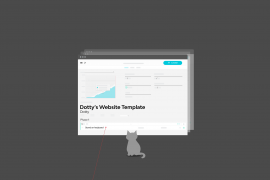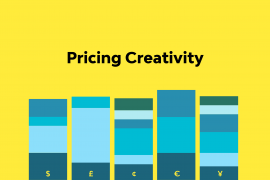On time, on budget and a happy client. So often, that’s the entire focus of a creative business. If you get this stuff right, then the rest should take care of itself? You’d certainly think so.
Profitable project management
I’ve been thinking about this a lot recently. We’ve built a great product, that teams love to use. They tell us on a daily basis (mostly, you can’t please everyone of course)! The philosophy has always been that if we can create a great product that teams love to use, then the data input by those teams is going to be more accurate. More accurate data, means business owners can make better decisions for the future of their business.
Obviously, nothing is ever 💯 (although the last Avengers movie got pretty close). This is why we’re currently focussing heavily on what’s making businesses, not just projects tick – how we move from creative project management software, to creative business management software.
We’ve recently introduced new elements to the ‘job page’. You can now see a ‘burn up’ projection for the job that you’re viewing. You can see how the job is tracking, based on how much time has been spent, and how close you are to the deadline for the job. It’s a great way to stay on track, work out when you need to ramp things up to get to the finish line, and also when to slow down and go and ask for more money.
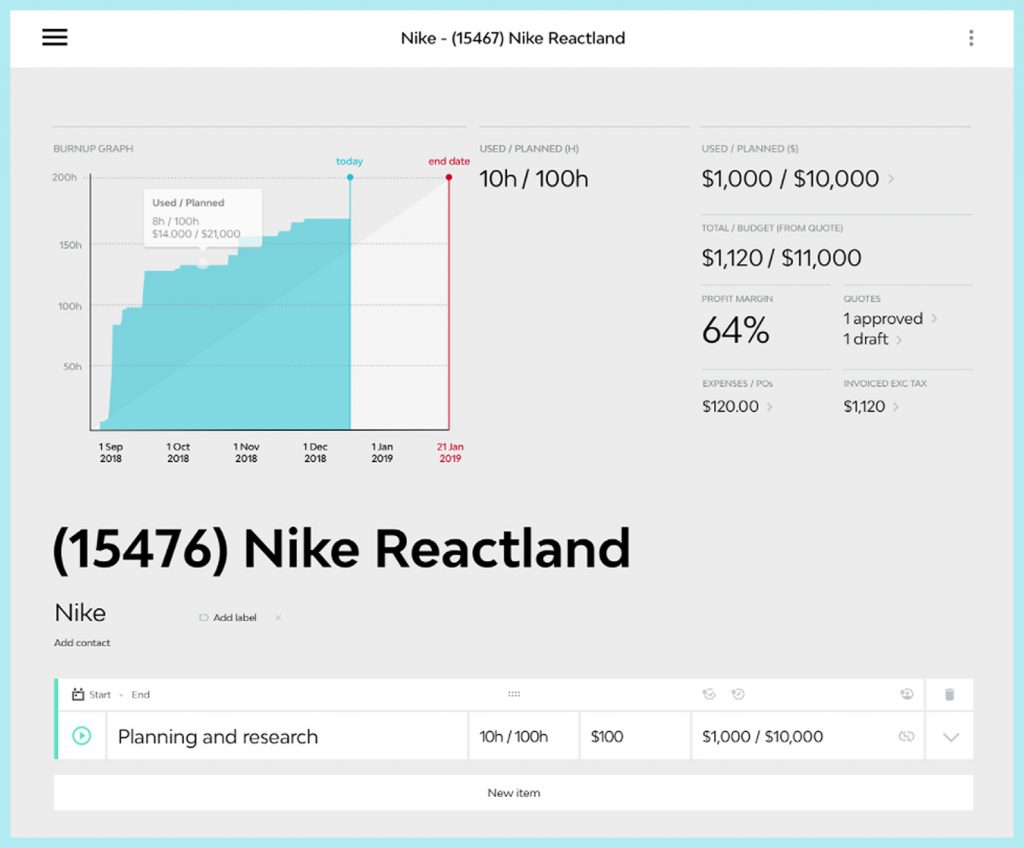
You can see how expenses are tracking on the job, and importantly, your profit margin. With time tracked, syncing real time to the job, and teams logging time more often, projects / jobs certainly seem to be running better – at least that’s what we’re told.
Better projects, happier teams, happier clients. Sorted. Right?
No. Because these are just parts of an incomplete puzzle.
Profitable business management
Running a business (a creative one at that) is a huge juggling act. Successfully fighting fires, to desperately chasing deadlines (trying not to drown in the process) is a feat that you’d think deserves a good pat on the back. But what about having enough cash in the bank to pay the team, hopefully yourself, and your suppliers, and the bills, and your software subscriptions (of course)?
In the past, I’ve always tried to keep things simple. Forecast how much money is going out of the business this month, this quarter, this year and how much money needs to come in to make all that worthwhile. Then, make sure I don’t kill myself and others in the process (not forgetting the dreaded tax bill – money in your account that looks nice, but was never really yours).
Do you know these numbers right now? Off the top of your head? They’re basically the numbers that are the difference between stepping in and out of business. Do you know who your top clients are? Are they top because they deliver the most revenue for your business? Are they the same clients that make you the most profit?
Fame vs Finances
The old adage of “the clients that make you money and the clients that make you famous” is still very alive in creative businesses today. It’s a scary balancing act. You want work that you enjoy doing, that keeps the team happy, but too often that sense of satisfaction comes from a pro-bono or heavily discounted arts / cause based client. It’s only when you lose one or two of those “clients that make you money” that you realise you don’t have a business based on the rest.
Eli Altman has some great advice on profitability in his book “Run Studio Run.” Check out the chapters, “Throwing Numbers Around” and “Goaltending” especially.
A good rule of thumb is to fit your clients into the rule of thirds.
1/3 healthy margin. Ideally you’re hitting above the 30% mark on work for these clients and they bill the lions share of your revenue.
1/3 bread and butter. Ideally you’re hitting 10-15% margin on these jobs. They’re healthy and you’ve got good relationships with the clients.
1/3 Complete creative license and opportunity. If possible, you really shouldn’t lose money on these clients. But let’s face it. You’re choosing to work for love over money here.
Can you clearly separate your client base with the above as a guide? How easy is it for you to do that exercise? Are you happy / shocked with the findings?
The numbers
Let’s say you’re doing $1m a year in revenue. How does that breakdown for you?
If it’s this first example (below), then you’re running pretty profitably. You have some good clients that deliver healthy profit. You’ve also found a way to work with some charity or cause aligned clients that you feel passionate about helping, but are still covering your costs (0% margin). The outcome? A 24% margin and $1m in revenue. Of course, for visual ease in this calculation I’m proportioning all of the overheads neatly against each client.
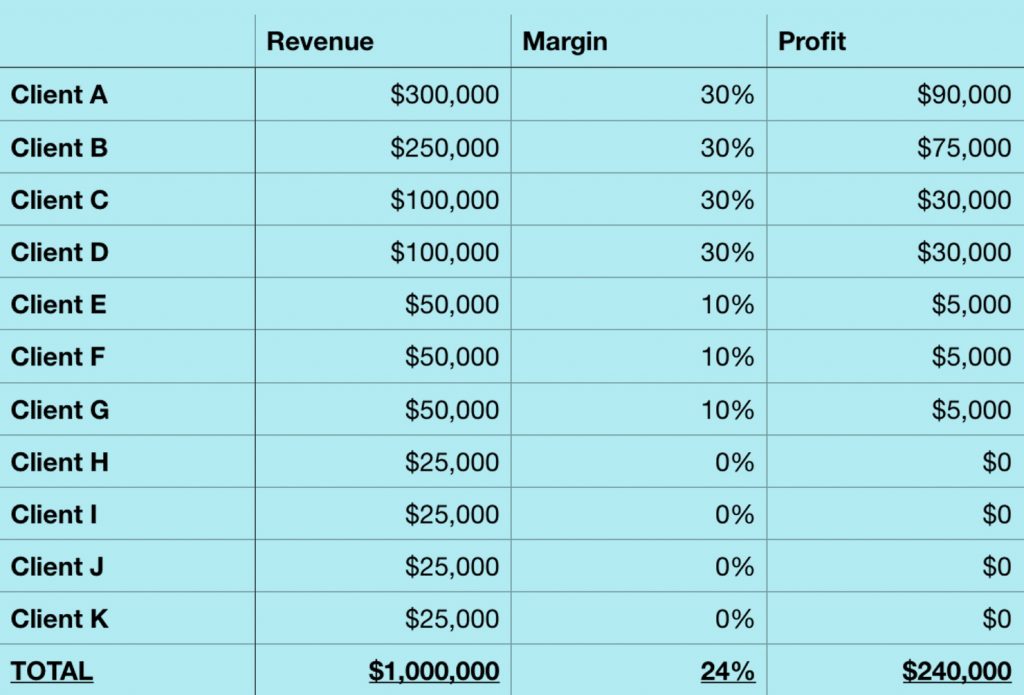
But, what happens if we get carried away and start doing all the “love” work for less than cost? AND we start overworking our biggest clients?
It’s not a healthy picture. This example might look preposterous. But, in reality it isn’t. As an industry we have to get better at this. The reality is that operating at such low margins is the equivalent of standing at the top of a cliff when a big gust of wind comes along. Lose Client A in the above equation and you’re plummeting into the rocks of wrapping up your business below. Sorry if some of this sounds like business 101, but let’s face it – growing up in the creative industry, for many of us, business 101 wasn’t a class we took a lot of interest in.
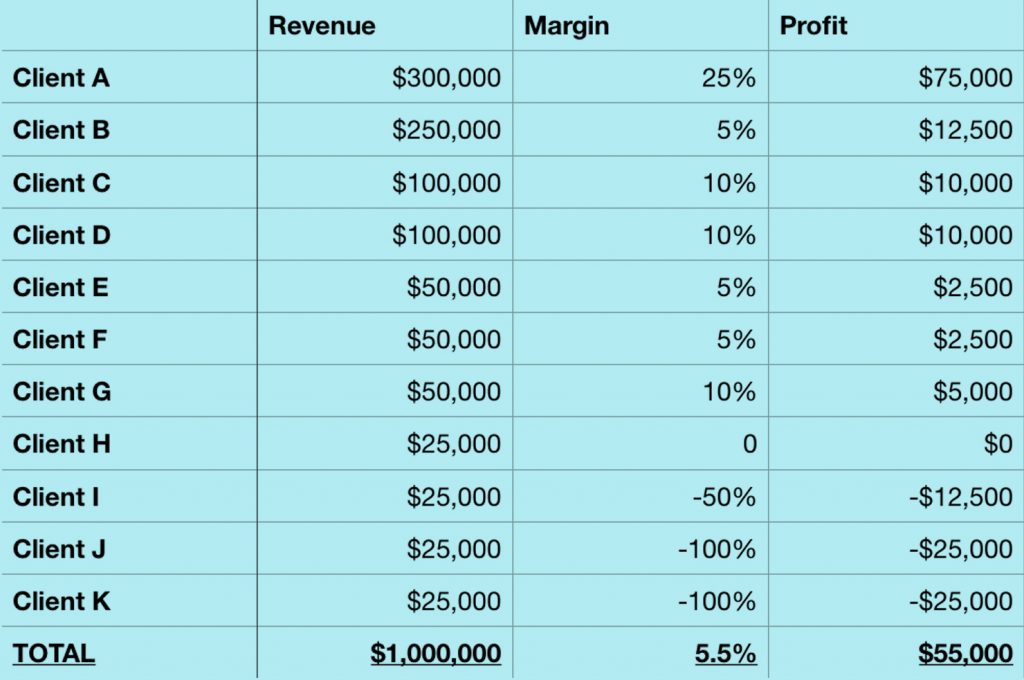
Running better businesses with Streamtime
As for Streamtime, we can forecast revenue and availability, but how can we help you to forecast the health and success of your business? Do you know when you’ve sailed past that line on the graph where you’ve got enough to pay all the salaries and bills next month. Can you feel confident that you’re ploughing full steam ahead into adding profit to the bottom line? Can we let you know when you’ve just had your best ever month? Can we tell you when it’s a good time to hire more people?
That’s what we’re striving towards at Streamtime HQ. You see, we really want to create the product that helps you to run a better creative business.
If you’re interested in more content like this, let us know. If you’d like to chew the fat over how to charge more, grow your profit, run a happier team – just shout. I’m always free for a chat about this stuff. Jump into a webinar, or just get in touch via the help bubble.





